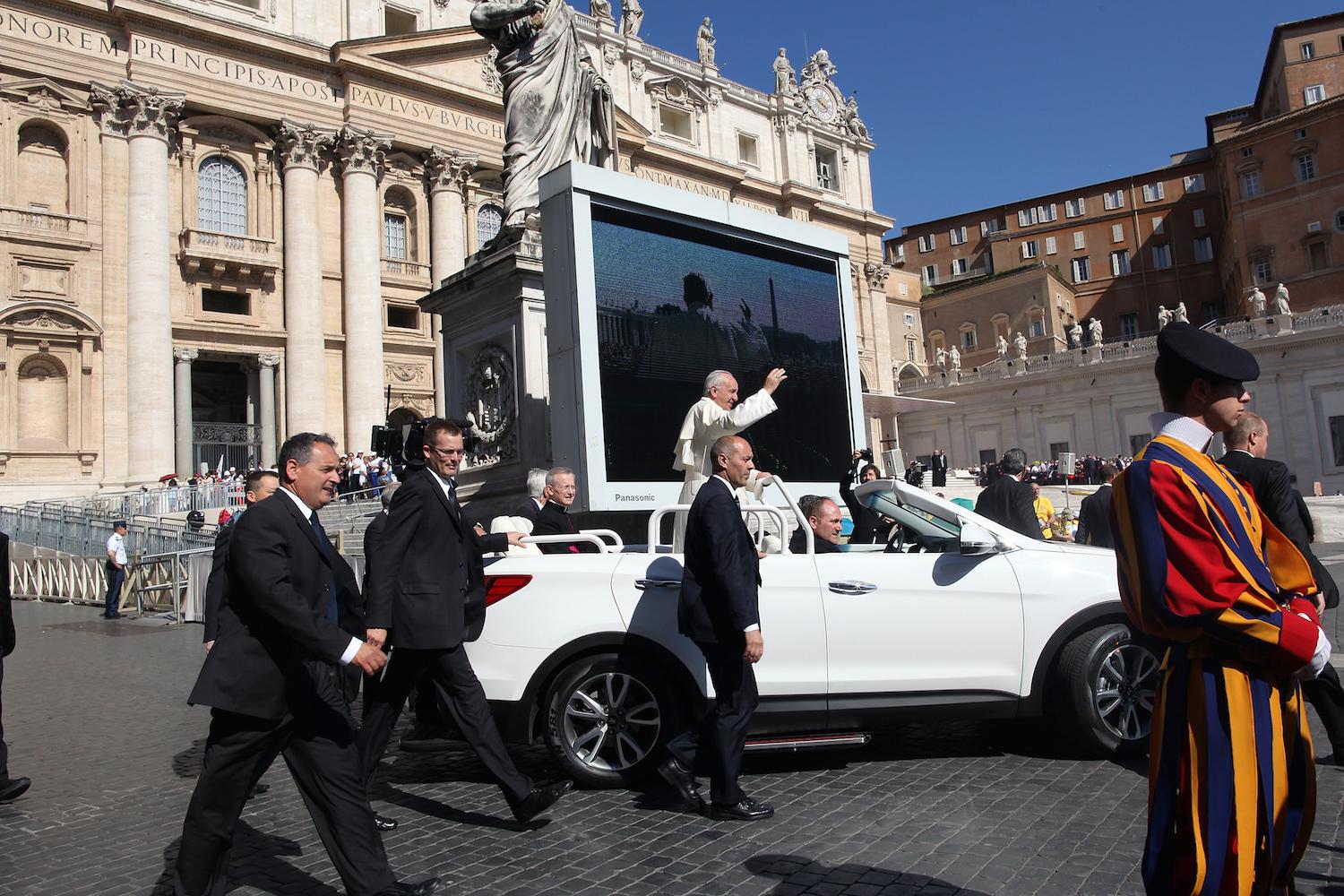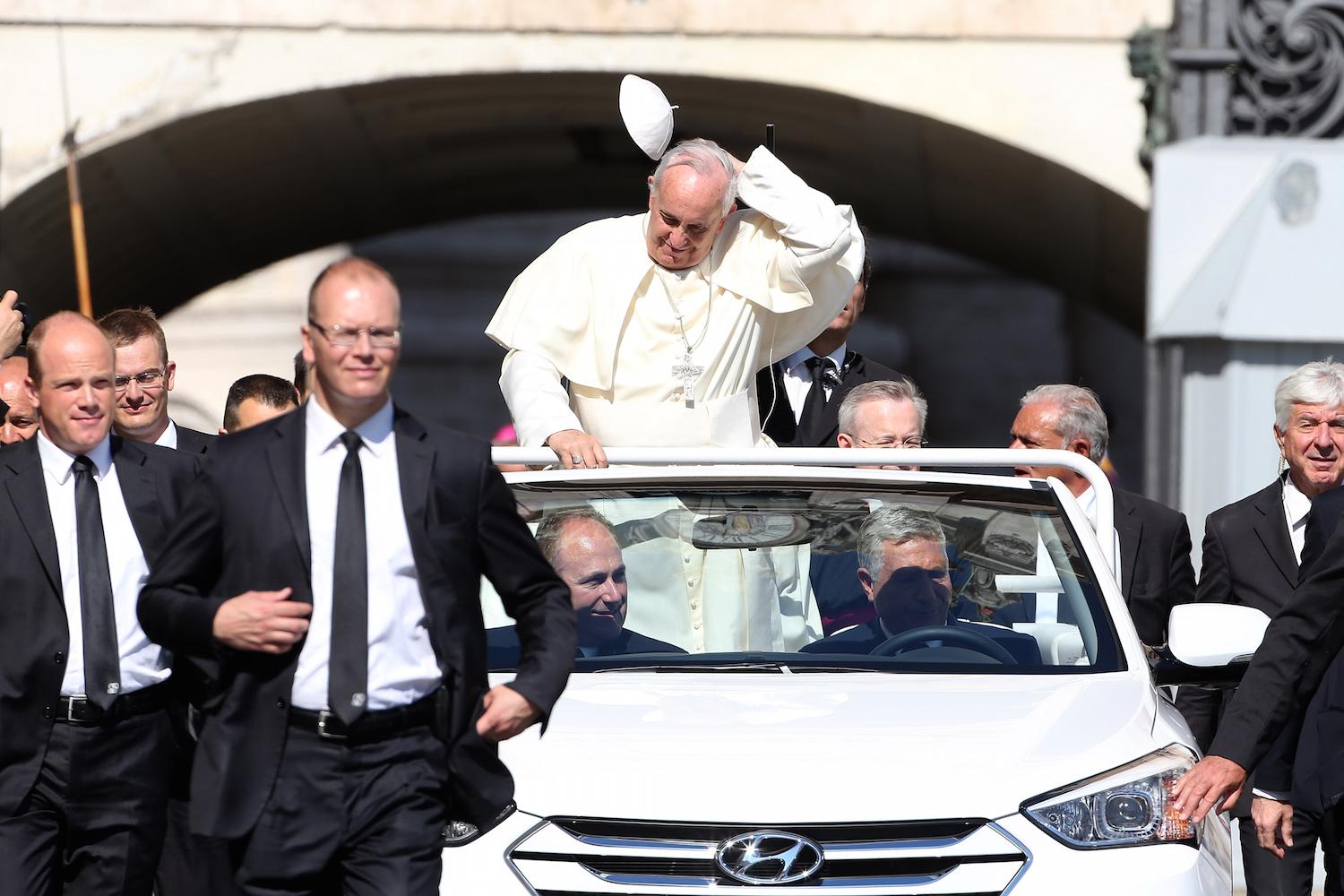
A Hyundai Santa Fe has been modified for holy duty; its roof was cut off behind the first two seats, creating a sort of Nissan Murano CrossCabriolet rival. Other changes include a retractable step, and numerous stabilizer bars for the Pope and crew to hold onto while in motion.

Also unique to this Popemobile is the lack of bulletproof glass protecting the Pope during his greetings. Separate from whether the Pope faces reduced threats based on the stances he has taken on contentious issues, the open-air design presents more of a security risk than the previous miniature houses of glass.
The bulletproof Popemobile, of course, was introduced after the attempted assassination of John Paul II in 1981, and was favored by Francis’s predecessor Benedict XVI.
However, Pope Francis told La Vanguardia: “I remember in Brazil, they’d provided for me an enclosed Popemobile, but I cannot greet the people and tell them I love them inside a sardine can, even if it is made of glass. For me it is a wall.”

Pope Francis added that, at his age, he doesn’t have much to lose. That all seems congruent with the Pope’s desire to offer a renewed vision within the Catholic Church. A Hyundai Santa Fe convertible doesn’t just benefit from being lighter and narrower than previous Popemobiles, it matches up quite well with his contemporary image.
It seems only natural that Pope Francis will request a new color for the Popemobile next; may I suggest neon green?
//


